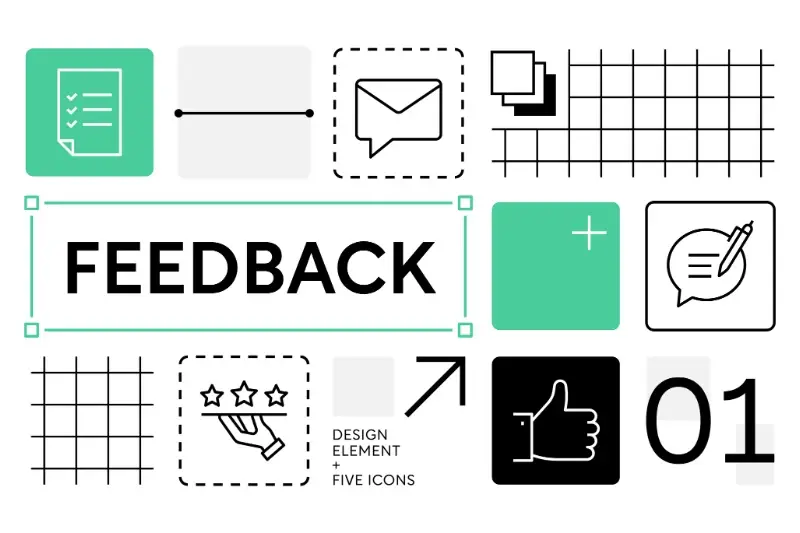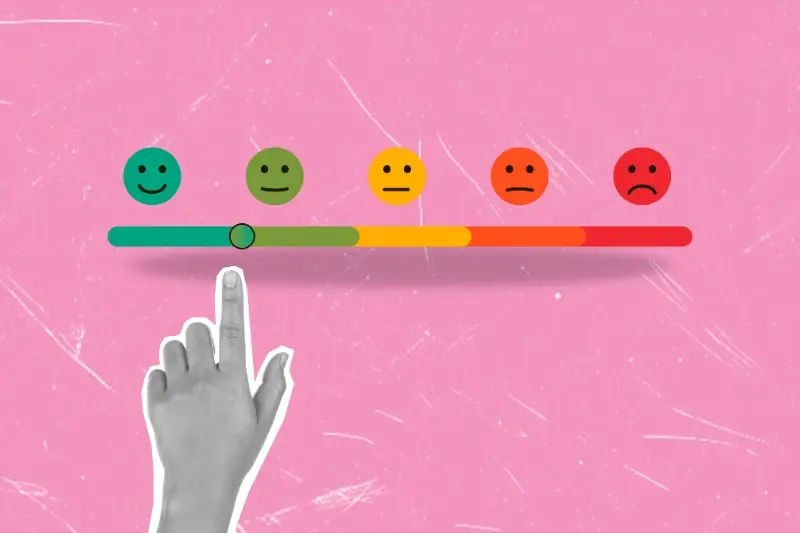The Role of User Feedback in Shaping Successful Startup Apps
Ninety percent of startups fail within their first year, and whilst there are many reasons for this staggering statistic, one stands out above all others: they build something nobody wants. I see this time and time again with new clients who've spent months developing their "perfect" app in isolation, only to launch it to crickets. They've fallen into the trap of thinking they know exactly what users need without actually asking them.
User feedback isn't just nice to have—it's the difference between building an app that thrives and one that gets deleted after the first use. When I work with startup teams, I always tell them that their initial app idea is just the starting point. What matters is how quickly they can learn from real users and adapt their product accordingly.
The best product teams I've worked with treat user feedback like oxygen—they can't survive without it, and they're constantly seeking more of it.
This approach of building feedback loops into your product development process isn't just about fixing bugs or adding requested features. It's about creating a user-centric design philosophy that puts real user needs at the heart of every decision. When you get this right, you'll find that your app doesn't just meet user expectations—it exceeds them, creating the kind of experience that turns casual users into passionate advocates.
What is user feedback and why do startup apps need it
User feedback is simply what people tell you about your app after they've used it. It's their honest opinions, complaints, suggestions, and praise all rolled into one. Think of it as a conversation between you and the people who actually use your product—they're telling you what works, what doesn't, and what they wish was different.
Now, you might think you know exactly what users want from your app. I've worked with countless startup founders who were convinced they had everything figured out. But here's the thing: users will surprise you every single time. They'll use your app in ways you never imagined, get stuck on things you thought were obvious, and love features you almost didn't include.
Why startup apps can't survive without it
Startups have a unique challenge—they're building something new with limited resources and time. Unlike big companies with massive budgets for market research, startups need to learn fast and adapt quickly. User feedback becomes your crystal ball, showing you what's working and what needs fixing before you waste precious time and money.
- It helps you spot problems before they become disasters
- You discover which features people actually use
- It guides your development priorities
- Users feel heard and become more loyal
Without feedback, you're basically building in the dark—and that's a recipe for creating an app nobody wants to use.
Types of user feedback that matter most for startups
Not all user feedback is created equal—some insights will move your startup forward whilst others might send you down a rabbit hole. After years of working with startup teams, I've learnt that the most valuable feedback comes from understanding what users actually do, not just what they say they do.
Focus on behavioural feedback over opinion-based feedback. Users might tell you they love a feature, but if they're not using it, that's the real story your product development needs to hear.
Behavioural feedback
This is the gold standard of user research. How long do people spend in your app? Where do they get stuck? Which features do they use most? Analytics tools can tell you this story without asking users a single question. When someone abandons your checkout process halfway through, that's feedback speaking louder than any survey response.
Problem-focused feedback
The second type that matters most is when users describe problems they're trying to solve. This feedback helps shape your product iteration strategy because it reveals the 'why' behind user behaviour.
- Task completion struggles
- Workflow bottlenecks
- Missing functionality that blocks goals
- Performance issues affecting daily use
- Accessibility barriers
These two feedback types create the foundation for meaningful feedback loops. They tell you what's broken and what's working, giving your team the direction needed for user-centric design decisions that actually matter.
Building effective feedback loops into your app development process
Getting feedback is one thing—actually using it properly is another beast entirely. I've worked with startups who collect tons of user opinions but never quite figure out how to turn them into real improvements. The secret isn't just gathering feedback; it's creating a system that makes it easy to act on what you learn.
The best feedback loops happen when you can quickly test ideas with real users and make changes fast. This means building your app in small chunks rather than waiting months before showing anyone. Each piece you build should be something users can actually try out and comment on.
Setting up your feedback workflow
Your feedback process needs to be simple for both you and your users. Here's what works best:
- Release small updates every few weeks instead of big changes every few months
- Ask specific questions about what users just tried, not general opinions
- Have someone on your team whose job is turning feedback into clear action points
- Test changes with a small group before rolling them out to everyone
- Keep track of which feedback led to which improvements
The magic happens when this becomes automatic. Users give feedback, you make changes, users see those changes and give more feedback. It's like having a conversation with your users through your app.
How to collect meaningful user feedback without overwhelming your users
Getting user feedback is brilliant—bombarding your users with endless surveys and pop-ups isn't. I've seen too many startups kill their user engagement by asking for feedback at every turn. The trick is being smart about when and how you ask.
Start by timing your feedback requests properly. Ask users after they've completed a task or achieved something in your app—they're more likely to respond when they're feeling positive about the experience. Never interrupt someone mid-flow; that's a sure way to annoy them and get rushed, unhelpful responses.
Keep it short and sweet
Your feedback forms should be quick to complete. One or two targeted questions work better than lengthy surveys. Think about what you actually need to know right now, not everything you might want to know someday. A simple "How was your experience?" with a rating scale followed by an optional text box does wonders.
The best feedback comes from users who feel heard, not interrogated
Make responding optional and easy to dismiss. Users should never feel trapped into giving feedback. Some of the most valuable insights come through passive feedback collection—watching user behaviour, analysing drop-off points, and monitoring support tickets. This gives you feedback loops without asking users to do extra work.
Turning feedback into actionable product improvements
Right, so you've collected all this brilliant feedback from your users—now what? This is where things get tricky because not all feedback is created equal, and acting on everything would be a disaster. I've seen startup teams get paralysed by the sheer volume of suggestions they receive, or worse, they cherry-pick the easiest fixes whilst ignoring the big issues.
The secret is learning to spot patterns in what people are telling you. If three users mention the same problem, pay attention. If thirty users mention it, drop everything and fix it! But here's the thing—you need a proper system for this.
Creating your feedback action plan
Start by categorising feedback into three buckets: bugs that need fixing right now, features that could improve the experience, and nice-to-have suggestions for later. Then prioritise based on impact versus effort.
- High impact, low effort changes should be your quick wins
- High impact, high effort items go into your next development sprint
- Low impact items get parked for future consideration
Don't forget to close the loop with users who provided feedback. A simple "thanks for the suggestion, we've fixed it" message builds incredible loyalty and encourages more people to share their thoughts.
Common feedback mistakes that can derail your startup app
After years of working with startups, I've watched plenty of them make the same feedback mistakes over and over again. It's painful to see because these errors can completely derail what might otherwise be a brilliant app idea. The most common mistake? Asking the wrong people for their opinions.
I've seen founders ask their mums, their mates, and anyone who'll listen what they think of their app. The problem is these people aren't your target users—they're just being polite! You need feedback from people who actually have the problem your app solves, not from people who want to make you feel good.
The biggest feedback traps to avoid
Here are the mistakes that can seriously damage your product development:
- Collecting feedback without a clear plan for what to do with it
- Asking leading questions that push users towards the answers you want
- Trying to please everyone instead of focusing on your core users
- Ignoring negative feedback because it's uncomfortable to hear
- Making changes based on feedback from just one or two users
- Asking what users want instead of observing what they actually do
Never ask users what features they want—watch how they use your app instead. People are terrible at predicting what they'll actually use, but brilliant at showing you through their behaviour.
The feedback process should guide your user research and product iteration, not confuse it. Get this right and you'll build something people genuinely love.
Using feedback to create a user-centric design approach
When I'm working with startup clients, one of the biggest shifts I see them make is moving from "what do we think users want?" to "what do users actually tell us they want?" It sounds simple, but you'd be surprised how many teams skip this step—and then wonder why their beautifully designed app sits unused in the app store.
User feedback isn't just about fixing bugs or adding features; it's about fundamentally reshaping how you approach design decisions. Every piece of feedback tells you something about how real people interact with your app, not how you imagine they do. When someone says "I can't find the search button" or "this takes too many taps," they're giving you a roadmap for improvement.
Making feedback the foundation of your design process
The most successful startup apps I've worked on treat user feedback as their north star. Instead of designing based on assumptions, they let user behaviour and comments guide their choices. This means regularly reviewing feedback during design sprints, testing new features with real users before launch, and—this is the hard part—being willing to scrap ideas that users don't connect with.
Building this approach takes time, but it's what separates apps that users love from apps that users tolerate. And in today's competitive market, tolerance isn't enough.
Conclusion
Building a successful startup app isn't just about having a brilliant idea—it's about creating something people actually want to use, and the only way to know that is by listening to them. Throughout my years working with startups, I've watched countless founders who thought they knew exactly what their users needed, only to discover they were completely wrong. The ones who succeeded? They built proper feedback loops right from the start.
User feedback isn't a nice-to-have feature you can add later; it's the foundation of everything you do. From the first prototype to your tenth product iteration, your users should be guiding every decision. Yes, it takes time to collect meaningful feedback without overwhelming people, and turning that feedback into actionable improvements can be tricky—but it's what separates apps that thrive from those that disappear into the app store graveyard.
The beauty of user-centric design is that it takes the guesswork out of product development. Instead of building features you think people want, you're building what they actually need. That's not just good business sense; it's the difference between burning through your funding and building something that lasts. Start listening to your users today, and let their voices shape your app's future.
Share this
Subscribe To Our Blog
You May Also Like
These Related Stories

Designing Feedback Forms Users Actually Want to Complete

Why User Feedback Is Your App's Best Friend (and How to Make the Most of It)





